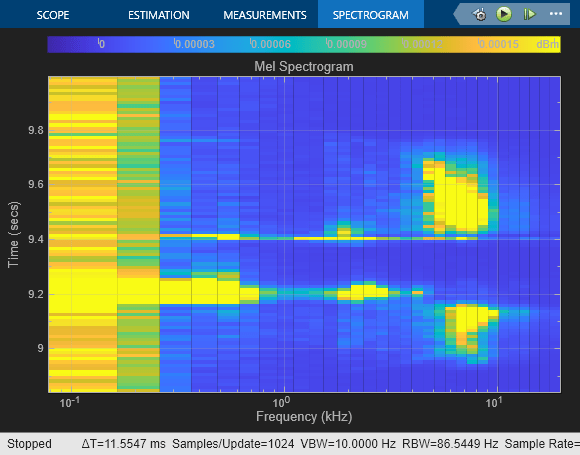Design Mel Filter Bank
Libraries:
Audio Toolbox /
Features
Description
The Design Mel Filter Bank block outputs a frequency-domain auditory filter bank using the mel frequency scale. You can use a mel filter bank to decompose an audio signal into separate frequency bands in the mel frequency scale, which mimics the nonlinear human perception of sound.
Examples
Ports
Output
Parameters
Block Characteristics
Data Types |
|
Direct Feedthrough |
|
Multidimensional Signals |
|
Variable-Size Signals |
|
Zero-Crossing Detection |
|

